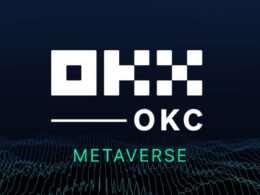Staking is proven to be a rewarding activity for investors in the crypto market. Aside from the fact that you don’t need expert trading knowledge to start staking, blockchain protocols and projects also make it easy to join this investing activity.
There are different kinds of staking, one of which is liquid staking. The concept is easy to understand, and liquid staking might be the best activity for you depending on your staking goal.

What is liquid staking?
In general, there are several types of staking—self-staking, exchange staking, and liquid staking. Just as the name implies, self-staking is where you stake alone. This means that you are the validator and all rewards go to you. However, self-staking is expensive for retail investors. Before self-staking, you have to accumulate at least 32 ETHs, which is a significant amount. The funds are also immovable. You can’t withdraw or move your funds within the staking period.
Exchange staking, on the other hand, is done through a centralized exchange service. This type of staking is suitable for retail investors who don’t want to keep their funds locked. You can withdraw your stakes at any time. However, the downside of exchange staking is high fees. The exchange platforms where you stake will charge a percentage against your rewards.

Lastly, liquid staking is a type of staking that solves all the limitations of self-staking and exchange staking. It’s an excellent option for those who don’t want to lock up their tokens while waiting for their rewards. As the name suggests, this is a type of “liquid” investment that you can withdraw at any time you wish. Liquid staking is the opposite of the usual staking, where you have to wait for the lock-up period to be completed.
What is Ethereum staking?
Ethereum staking is pretty famous for those who are fond of staking. Aside from ETH being the second token with the highest market cap next to Bitcoin, Ethereum is also a famous blockchain open-source protocol.
Ethereum staking is all about staking your ETH tokens through third-party applications. Then, the third-party application will deposit your ETH into the Ethereum contract. That’s how simple Ethereum staking is.

What makes it a great alternative that self-staking and exchange staking is that there’s no need for a user to allocate 32 ETH before becoming a validator. Plus, it allows withdrawal of the stakes at any time. Thus, there is no need to comply with lock-up periods or pay high exchange fees.
How does liquid staking on Ethereum work?
The liquid staking on Ethereum works like this:
- You deposit your ETH with a third-party application
- The third party application deposits your ETH to the Ethereum deposit contract
- The third-party application here serves as the validator
- The ETH tokens of other investors are collected together to fund the validator (since liquid staking only requires you to stake a small amount)

After staking your ETH, you will receive a tokenized version of your staked tokens, such as sETH. Those who stake can use their tokenized tokens, thereby maintaining the liquidity of their ETH while the same is deposited in Ethereum contracts. In sum, you are earning while being able to use the Ether tokens you have.
How much ETH do you need for staking?
ETH for staking doesn’t have to be expensive. You don’t need a million dollars to stake and start earning. With liquid staking, you can stake small amounts. Again, it doesn’t have to be 32 ETH, as in the case of self-staking. It could be 1 ETH or less. The minimum requirement will depend on the staking platform you would use. Staking platforms have different needs. Some require at least 1 ETH and those that require any amount.
If you can’t afford to stake 1 ETH yet, you can always resort to third-party applications with lower staking requirements.

How much can you earn from liquid staking?
The answer would depend. You have multiple factors to consider when staking, such as the staking platform you choose, the amount of ETH you stake, the length of the period you allow the network to use your ETH, and the network fees. Of course, the more tokens you stake, the more rewards you can get from liquid staking. If you stake small, there’s a chance that your rewards would be small as well.

The secret to earning big while staking on Ethereum is choosing the right staking application. Although the amount of ETH you stake matters, you can always start staking with a few tokens then allow your money to stay on Ethereum for as long as possible. Staking platforms have different rules and yields. So you can easily compare which one is better in terms of APR. But then again, you have to do your research so you can successfully compare these staking platforms and choose who among them rewards the highest percentage to investors.
Is liquid staking Ethereum safe?
Liquid staking Ethereum is safe in general, but there are several factors to consider. For example, if the staking platform you choose is a scam, you will likely lose your money. On the other hand, if you choose a reliable and trustworthy platform, then there’s a high chance that you will earn in the long run. It’s all about doing your due diligence when staking. You shouldn’t trust a staking platform with too-good-to-be-true promises. Also, stake what you can afford to lose!
As a user or investor, you have several options when it comes to staking. Liquid staking on Ethereum is for those who want affordable investments that don’t require them to lock up their funds. Remember to do your research into what is reliable and trustworthy staking platforms.
With over $200M assets staked, providing $20M in annual yield, RockX consists of a team of tech experts that have been working on blockchain projects since 2019, providing a safe and secure technology infrastructure to support the most innovative protocols in the market.









